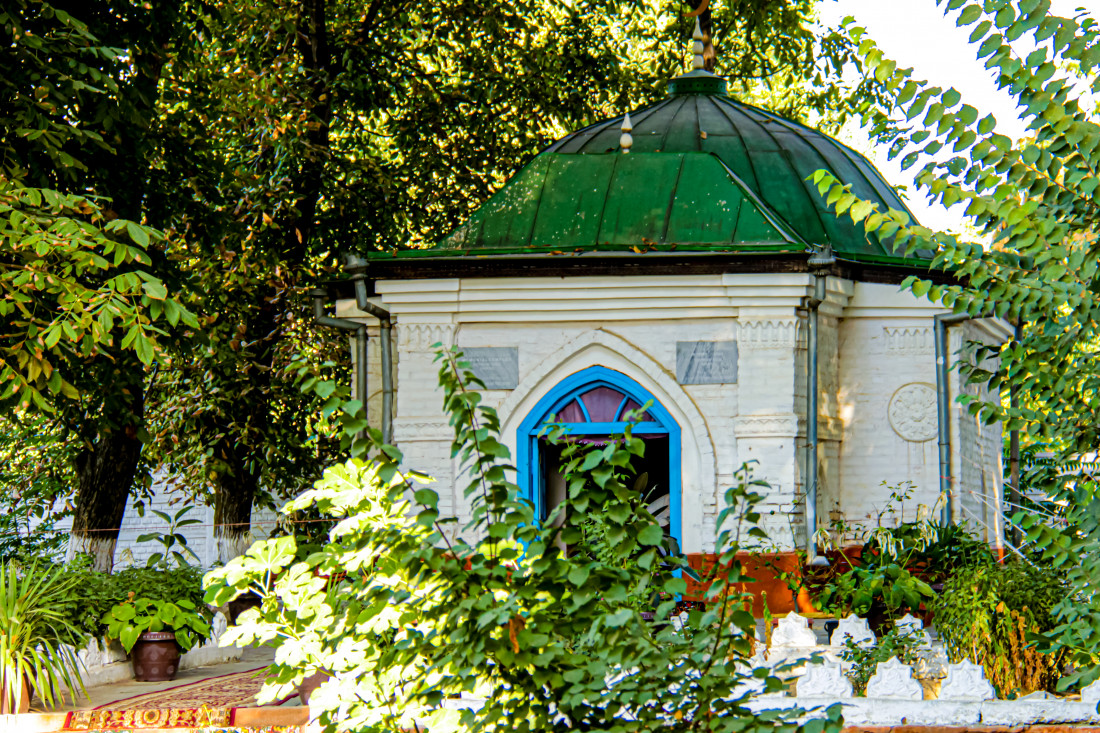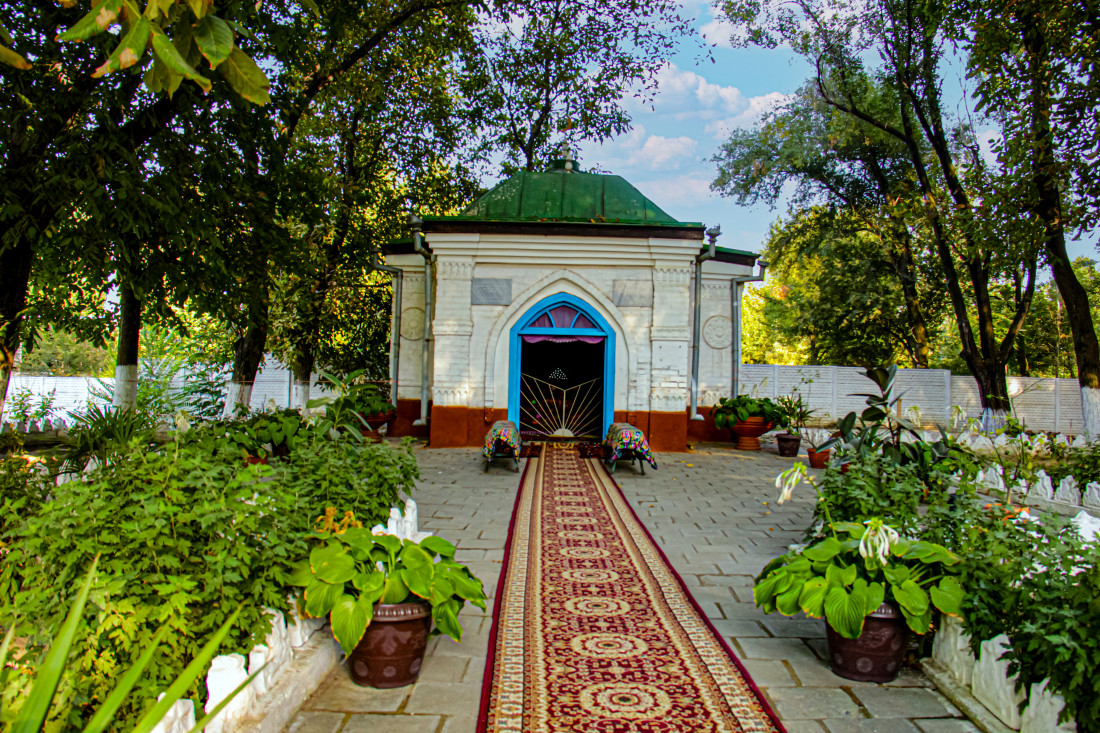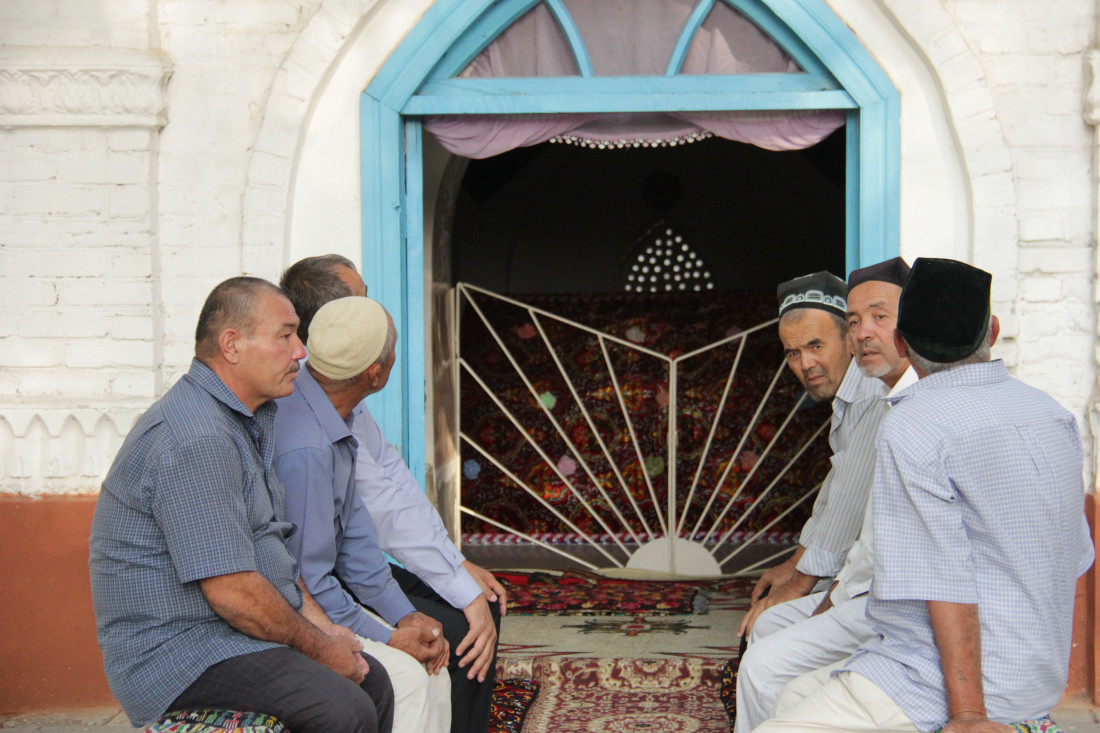Andijan region is one of the oldest and unique regions of Uzbekistan. For many centuries, this region has been famous for its ancient pilgrimage sites. Among such a worthy place is occupied by the mausoleum of Kuteiba ibn Muslim, the Arab commander, the first person who brought Islam to the territory of Central Asia.

There is one holy place in the mahalla of Kilichmozor of the Jalakuduk district in the Andijan region, it is associated with the name of Qutayba ibn Muslim. There are many legends associated with this place. It is believed that an Arab commander passed through this place many thousands of years ago, and an ancient tree grows here, which was allegedly touched by Qutayba ibn Muslim. According to legend, the juice dripping from the trunk of an ancient elm tree gives a person vigor, strength, and health.

Who was Qutayba ibn Muslim and what trace did he leave in the history of our country? According to historical information, Qutayba ibn Muslim ibn Umar ibn Husayn ibn Robiya ibn Khalid ibn Usaid Al-Haid was born in 661 in the town of Sham called Bohili, on the territory of present-day Iraq. He was a native of the oldest Arab tribe of the Bahilites. A prominent Arab military commander, thanks to his organizational skills and military skill, was appointed governor of Khorasan in 704. It was Qutayba who is considered one of the main organizers of the Arab conquests in Central Asia, then Transoxiana. After passing through the Amu Darya River, which separated the lands between the territory of the caliphate and the newly conquered lands for a long time, Qutayba's troops captured Kesh in 708, Bukhara in 709, Khorezm and Samarkand in 712, and Chach (Tashkent) in 713. In 714, his troops mastered the Ferghana Valley. With the arrival of Qutayba ibn Muslim in Transoxiana, the Islamization of the local regions began. For example, in Bukhara, Friday prayers began to be held with the participation of newly converted citizens, and since they did not yet know Arabic and the words of prayer, the interpretation of the Koran was in Persian. Qutayba ibn Muslim ruled Transoxiana for about 13 years and at the age of 48 was beheaded by rebels who refused to obey the newly elected Caliph Suleiman. Today it is not known for certain exactly where the Arab commander was killed. According to one version, he died and was buried in Khorasan, according to another version in the Fergana Valley. One of the tombs of the Arab commander is mentioned in the chronicles of the ancient historian Narshahi under the name "Mozor-buva".
According to historical information, a large mausoleum was erected by Samarkand craftsmen at the behest of Amir Temur at one of the burial sites of Qutayba ibn Muslim on the territory of the Ferghana Valley.

The area of the mausoleum at that time was 5 hectares of land, and the mausoleum itself reached a height of up to 20 meters. In the Soviet years (1935), for ideological reasons, the mausoleum was destroyed and restored only during the years of Independence. Today the mausoleum is a small brick building with a wide lancet entrance. The entrance is decorated with a small decorative brickwork, passing below and on top of the main facade.
Working hours: 9:00 AM - 6:00 PM, Mon-Fri
For any questions
ПОЛЬЗОВАТЕЛЬСКОЕ СОГЛАШЕНИЕ
1. Определение
Настоящее Пользовательское соглашение (далее — Соглашение) является Публичной офертой в соответствии со статьёй 367 Гражданского кодекса Республики Узбекистан от 21.12.1995 (https://lex.uz/ru/docs/111181#162763) и регулирует порядок использования материалов и Сервисов сайта Государственного унитарного предприятия «Национальный PR-центр» (далее — Предприятие), размещённого на веб-сайте и поддоменах Национального Туристического Информационного Центра: https://uzbekistan.travel/ (далее — Сайт).
Посетитель и (или) Пользователь подтверждает, что ознакомлен, полностью и безоговорочно принимает все условия настоящего Соглашения и обязуется их соблюдать.
Использование Сайта Пользователем означает полное принятие данного Соглашения «как есть» в форме акцепта.
Соглашение вступает в силу с момента посещения любой страницы Сайта и (или) регистрации на Сайте и действует бессрочно во время пользования Сервисами Сайта.
Настоящее Соглашение обязательно для исполнения всеми Посетителями и Пользователями без каких-либо изъятий и дополнительных согласований.
Пользователь обязуется самостоятельно проверять актуальную редакцию Соглашения на Сайте перед использованием Сервисов.
2. Предмет Соглашения
Предметом настоящего Соглашения являются правила использования материалов Сайта и предоставление Посетителю и (или) Пользователю возможности использования Сервисов Сайта.
Предприятие является правообладателем исключительных прав на Сайт в целом и на его составные части, включая все виды контента: логотипы, товарные знаки, тексты, статьи, аннотации, иллюстрации, фотографии, графику, аудио- и видеофайлы, пользовательские интерфейсы, дизайн, структуру, программы, базы данных.
Я прочитал(а) и соглашаюсь с условиями использования сайта и политикой конфиденциальности.
